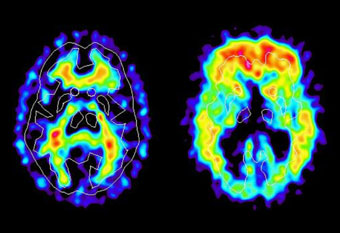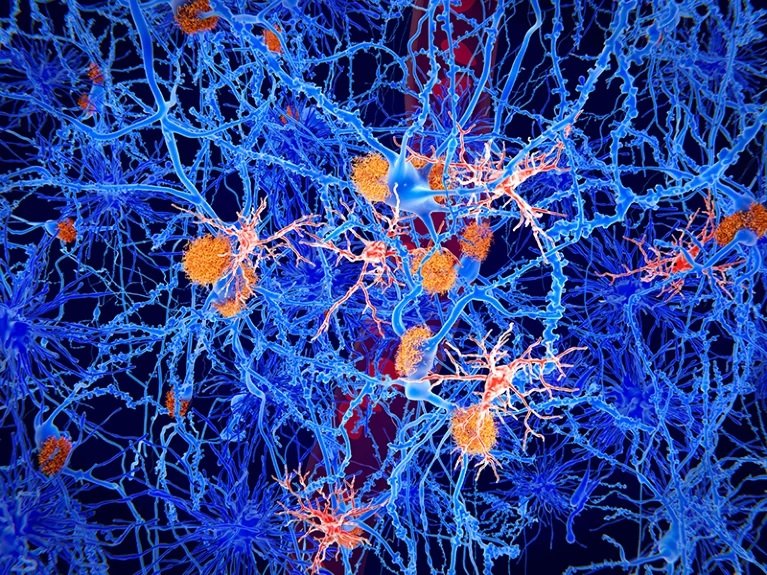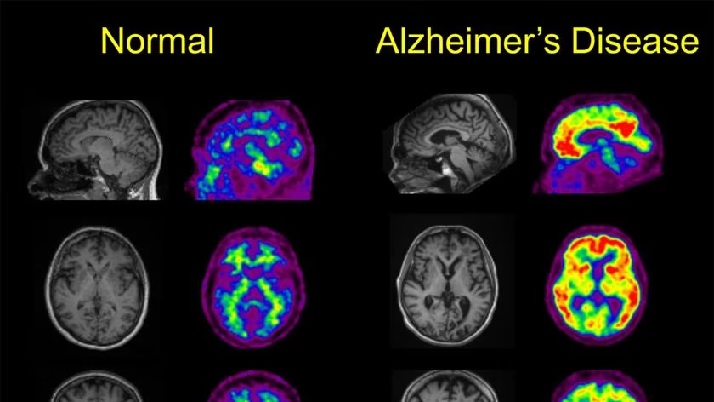People with an abundance of specific neurons are more likely to escape cognitive decline despite having signs of Alzheimer’s in their brains, reporte
People with an abundance of specific neurons are more likely to escape cognitive decline despite having signs of Alzheimer’s in their brains, reported Nature.
Scientists have identified two types of brain cell linked to a reduced risk of dementia in older people, even those who have brain abnormalities that are hallmarks of Alzheimer’s disease.
The finding could eventually lead to new ways to protect these cells before they die. The results were published in Cell on 28 September.

The most widely held theory about Alzheimer’s attributes the disease to a build-up of sticky amyloid proteins in the brain. This leads to clump-like ‘plaques’ of amyloid that slowly kill neurons and eventually destroy memory and cognitive ability. But not everyone who develops cognitive impairment late in life has amyloid clumps in their brain, and not everyone with amyloid accumulation develops Alzheimer’s, reported Nature.
Neurobiologist Hansruedi Mathys at the University of Pittsburgh School of Medicine in Pennsylvania and neuroscientist Li-Huei Tsai and computer scientist Manolis Kellis at the Massachusetts Institute of Technology in Cambridge and their colleagues decided to investigate this disconnect. To do so, they used data from a massive study that tracks cognitive and motor skills in thousands of people throughout old age.

The researchers examined tissue samples from 427 brains from participants who had died. Some of those participants had dementia typical of advanced Alzheimer’s disease, some had mild cognitive impairment and the remainder had no sign of impairmentv, reported Nature.
The researchers isolated cells from each participant’s prefrontal cortex, the region involved in higher brain function. To classify the cells, they sequenced all the active genes in each one. This allowed them to create an atlas of the brain showing where the different cell types occur.

The scientists identified two key cell types that had a specific genetic marker. One had active genes coding for reelin, a protein associated with brain disorders such as schizophrenia, and the other had active genes that code for somatostatin, a hormone that regulates processes throughout the body, reported Nature.
People who had greater levels of cognitive impairment, the researchers found, had relatively low numbers of these cells. Those who had no cognitive impairment had high numbers of the cells, even if they also had large amounts of amyloid in their brains that would typically denote Alzheimer’s. This suggests that these cell types protect the brain against the disease’s symptoms.

Most Alzheimer’s research has focused on excitatory neurons, which relay electrical signals to activate other neurons. But the authors found that the cells with reelin or somatostatin were inhibitory neurons, which halt neuronal communication. These inhibitory cells might therefore have a previously unknown role in the types of cognitive function that are lost during Alzheimer’s, reported Nature.
The researchers suspect that inhibitory cells with reelin or somatostatin are particularly vulnerable to being destroyed in Alzheimer’s disease, at least in some individuals. The finding supports that of a paper published earlier this year that found a reelin mutation in a man with high amounts of amyloid in his brain but no symptoms of Alzheimer’s. Because of this, Tsai says the team’s findings were not terribly surprising, but reassured them that they were on the right track. “They’re relevant pathways to Alzheimer’s disease and also mitigating pathways”, reported Nature.

“It’s a very exciting paper,” says Lea Grinberg, a neurologist at the University of California, San Francisco. Thus far, Grinberg says, most efforts to develop Alzheimer’s treatments have focused on ways to attack amyloid plaques in the brain, but the latest results could help identify ways to protect vulnerable brain cells instead.
The single-cell sequencing technique and resulting atlas are “state of the art”, says Jerold Chun, a neuroscientist at Sanford Burnham Prebys Medical Discovery Institute in La Jolla, California, reported Nature.
Chun says the loss of inhibitory cells could potentially explain why people with Alzheimer’s are prone to seizures that result from too much neuronal firing. He adds that the atlas, which is available for other researchers to use, will provide a starting point for more comprehensive studies as sequencing technology advances. “It’s going to be really valuable”, as reported by Nature
All Credit To: Nature


